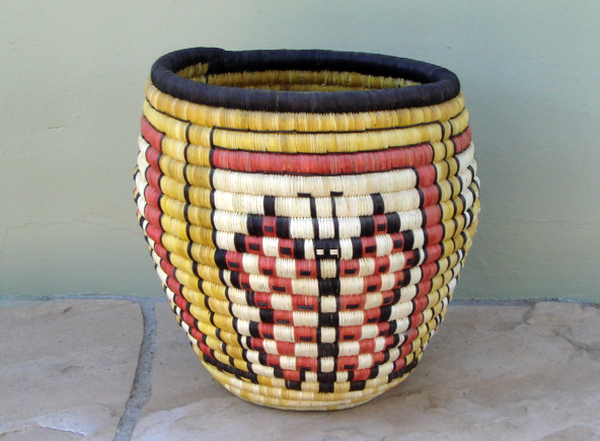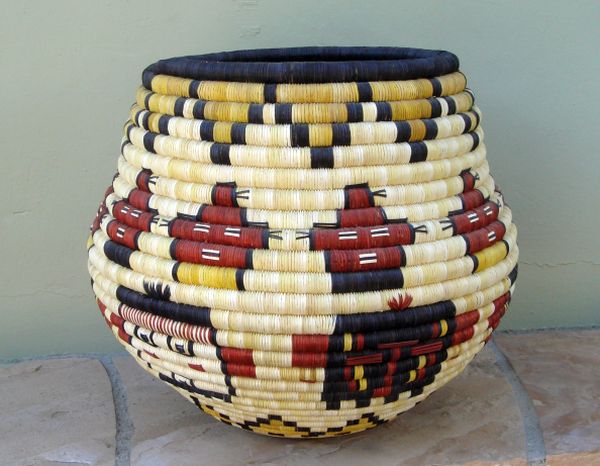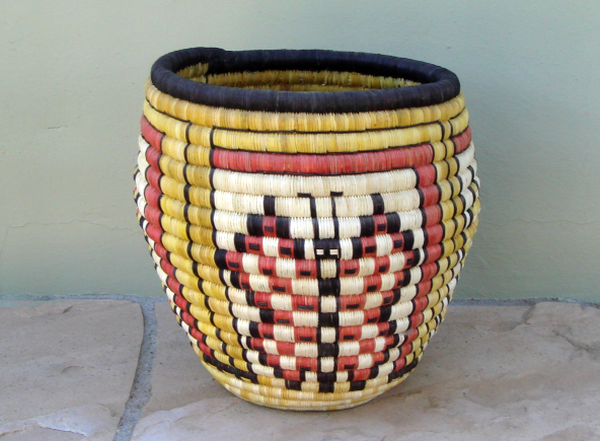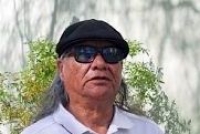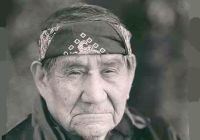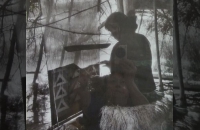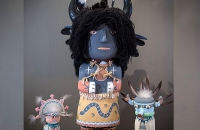HOPI BASKETRY
Basketry has been indispensable to Native Americans and represents one of the oldest crafts known to mankind. Through the use of both natural and dyed plant materials, basket weavers have created some of the most striking pieces of art that are first and foremost utilitarian. Although basketry has been around for centuries, it is widely agreed that it is one of the first Indian arts and crafts to die out in many tribes.
The Native American basket is perhaps the oldest invention of Native American culture. Fragments of baskets and other weavings are found in the earliest sites of the “ancient ones”, those peoples thought to be the predecessors of today’s modern Puebloans who left their dwellings and mysterious painted symbols on stone and vanished. Originally utilitarian, Native American Indian baskets were used for cooking, carrying, and storage, but as with all utilitarian items of the Native Americans, they were also an expression of art and Tribal identity. At the turn of the century, Native American Indian baskets began to be woven for trade as well as for tribal ceremony. Being made of organic materials, few antique Native American Indian baskets survive.
The Hopi Reservation is located in northeastern Arizona. The Hopi Reservation is completely surrounded by the Navajo Reservation. Within the Hopi Reservation are three Mesas which contain Hopi Villages: First Mesa (Walpi, Hano and Sichomoivi), Second Mesa (Shongopavi, Mishongnovi,Shipaulovi, and Third Mesa, (Hotevilla, Bacavi, Moencopi, Kykotsmovi and Oraibi. Hopi Indian Basket weavers gather plant materials, using the natural background to contrast with their vivid designs typically in red, yellow, and black. Hopi Native American basket makers use three basic techniques: plating (cradle boards and Piki trays), wicker (Third Mesa) and coiling (Second Mesa). Hopi Indian baskets are made from rabbit brush, sumac, dune brush and yucca. Hopi Native American Baskets are symbolic of Hopi Life past and present, religion, dances, rainmaking, corn harvest and rites of passage.
Today, while many Pueblo peoples no longer weave baskets, Hopi women continue a centuries-long tradition of basketry. They are also innovative artists, developing new methods and designs from traditional ones. Red, yellow, and black are the usual colors skillfully arranged to produce katsina, animal, blanket, and geometric designs. The natural colors of plant materials used to construct the baskets serve as a background for the designs, contrasting with the vivid colors of commercial dyes. The symbolism and tradition in Hopi basketry designs link each unique handmade basket to other parts of Hopi life, past and present. In particular, basketry designs reflect aspects of Hopi religion and agriculture. For the Hopi, just as the basket's fibers are woven together, so are all the pieces of Hopi culture: none is unrelated to another.

